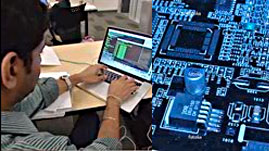Teachers' Domain - Digital Media for the Classroom and Professional Development
User: Preview

Source: Produced for Teachers' Domain
This interactive activity produced for Teachers' Domain investigates three possible career paths in information and security technologies: administration, development, and integration. Explore each path to learn more about the education and experience required for particular jobs such as computer support specialist, network and systems administrator, computer security specialist, database administrator, computer technician, computer hardware engineer, computer software engineer, computer training specialist, computer systems analyst, and network engineer.
Here are suggested ways to engage students with this interactive activity and with activities related to this topic.
For more media and information about the topics in these Teaching Tips, see these links:
 Loading Standards
Loading Standards Teachers' Domain is proud to be a Pathways portal to the National Science Digital Library.
Teachers' Domain is proud to be a Pathways portal to the National Science Digital Library.
